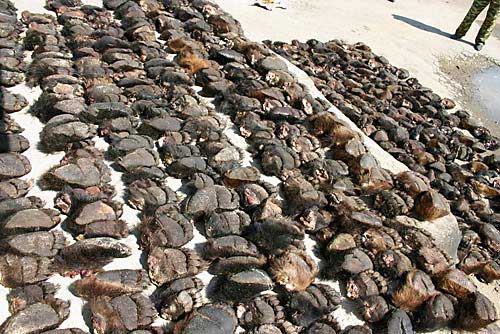The Big Business of Animal Trafficking


Killing wild animals is big business. While much wildlife trade is legal, between $15 to $55 billion a year, a huge black market exists, especially in rare and endangered species.
Wildlife trafficking is now among the most lucrative criminal trades in the world—worth perhaps $20 billion annually, and some say more—behind only drugs and human trafficking. Ounce for ounce, products such as rhino horn and deer musk can be worth more than gold or cocaine; in the 1990’s, crystallized bear bile sold in South Korea for over $1,000 a gram, which is about twenty times the price of heroin. The reason is simple: money. The earnings from wildlife trafficking usually amount to well over a 1,000 percent return on investment.
Organized crime groups, especially those with smuggling capabilities, find the wildlife angle increasingly attractive with its trifecta of low risks, high profits, and weak penalties. Others, too, are getting into the game, from petty criminals to international terrorists
Authorities around the world suspect they’re intercepting under 10 percent of all wildlife smuggling, with many saying it’s less than 1 percent. The vast size of most wilderness areas and the limited number of enforcement officers virtually guarantee poachers and smugglers free access. Couple that with the inability to access forensic science to analyze evidence – and link the suspect to his crime – and the only sure-fire way to convict a perpetrator was to catch him in the act.
Having a wildlife forensic lab changed all that.
